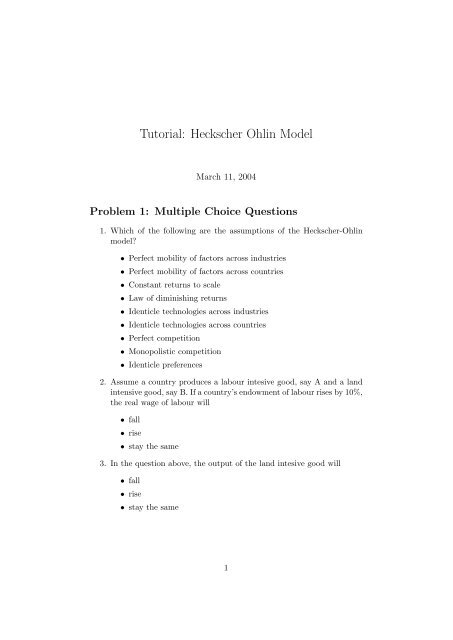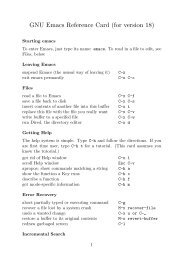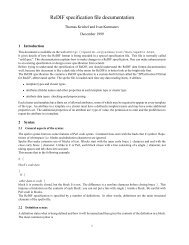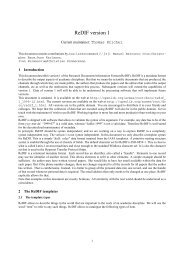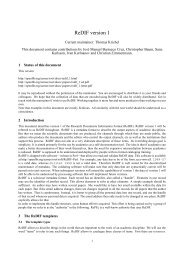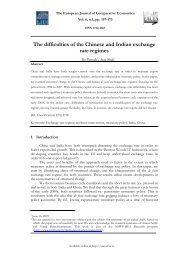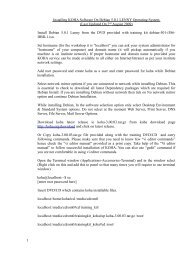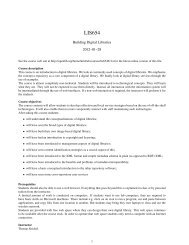Tutorial: Heckscher Ohlin Model
Tutorial: Heckscher Ohlin Model
Tutorial: Heckscher Ohlin Model
- No tags were found...
Create successful ePaper yourself
Turn your PDF publications into a flip-book with our unique Google optimized e-Paper software.
<strong>Tutorial</strong>: <strong>Heckscher</strong> <strong>Ohlin</strong> <strong>Model</strong>March 11, 2004Problem 1: Multiple Choice Questions1. Which of the following are the assumptions of the <strong>Heckscher</strong>-<strong>Ohlin</strong>model?• Perfect mobility of factors across industries• Perfect mobility of factors across countries• Constant returns to scale• Law of diminishing returns• Identicle technologies across industries• Identicle technologies across countries• Perfect competition• Monopolistic competition• Identicle preferences2. Assume a country produces a labour intesive good, say A and a landintensive good, say B. If a country’s endowment of labour rises by 10%,the real wage of labour will• fall• rise• stay the same3. In the question above, the output of the land intesive good will• fall• rise• stay the same1
Problem 2Consider an economy which produces manufactures Q m and food Q f . Ituses two factors of production - capital K and land L. To produce one unitof Q m requires a KM units of capital, and to produce one unit of Q f requiresa LM units of labour. Assume that the relative prices are P FP Mwhere P F isthe price of food and P M is the price of manufactures. The factor price ratiois w r, where w is the wage rate of labour and r is the rental rate of capital.The total supply of labour in the economy is L 1 and capital is K 1 .1. Assume manufactures is capital intensive relative to food. Puttingmanufactures on O y and food on O x , draw a box diagram to show theallocation of capital and labour across manufactures and food. Labelthe diagram to show the inital allocation. Describe what it means fora production to be labour intensive and capital intensive.2. Suppose the available capital stock in the economy increases. Drawanother box diagram to show the effect on allocation of capital andlabour across manufactures and food.3. Suppose instead of capital stock, there is an increase in the supply oflabour. Draw another box diagram to show the effects of this changeon the allocation of labour and capital across manufactures and food,comparing it to the inital case in part(1).Problem 3Consider the economy in Problem 2. Call it Home. Now consider anothereconomy called Foreign producing manufactures and food. Assume Homeis labour-abundant and foreign is capital abundant. Assume that relativedemand at Home and Foreign are the same and both Home and Foreignhave the same technologies to produce manufactures and food.1. What does it mean for home to be ’labour-abundant’ and foreign tobe ’capital-abundant’?2. If Home and Foreign trade, describe the patterns of trade3. Who gains and who loses from trade at Home? At Foreign?4. Comment on what happens to relative prices and factor price ratiosin each country.2


